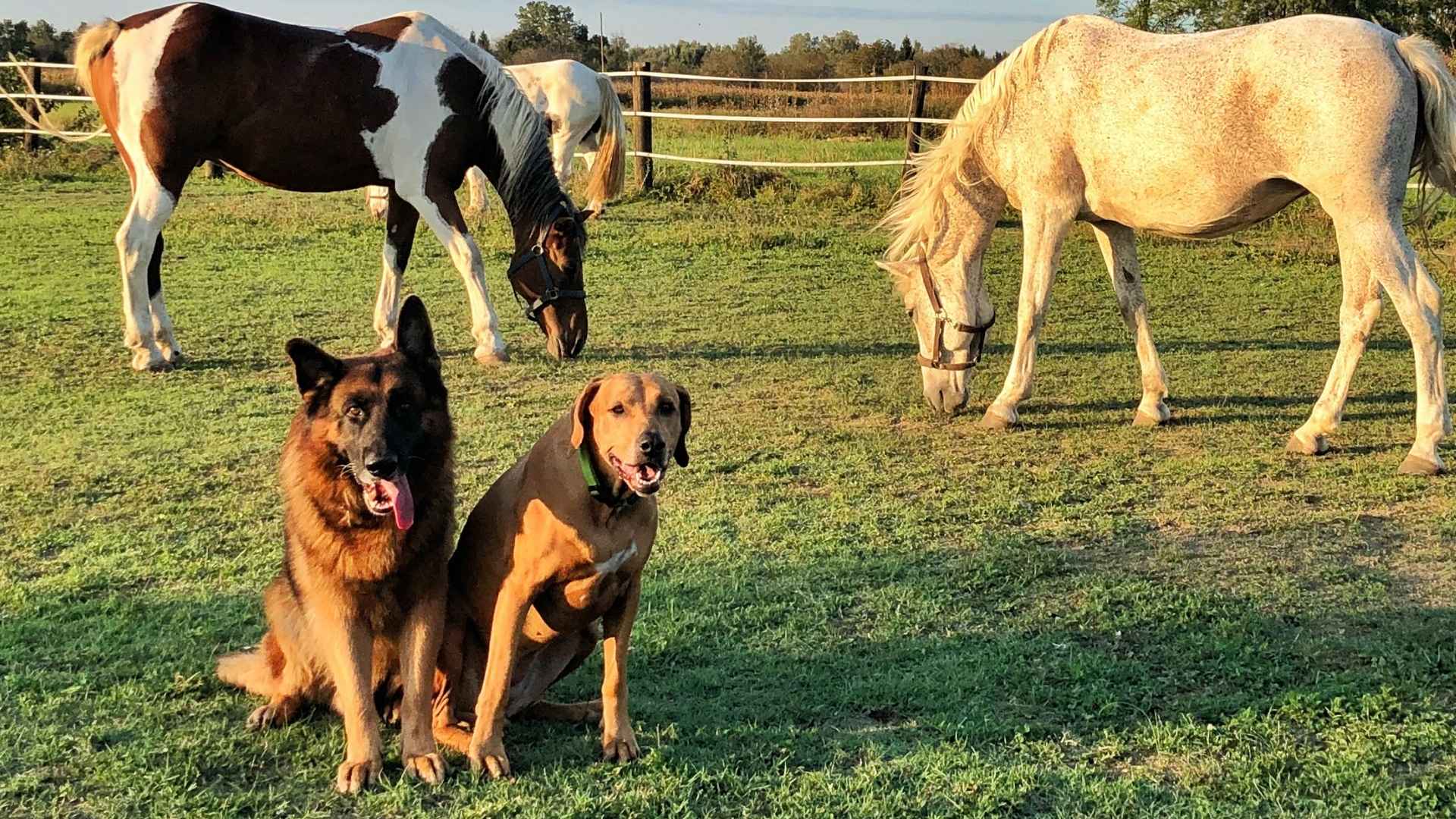There’s no fence strong enough to stop everything. Not out here. Not where the wind carries scent from miles away and creatures you didn’t invite crawl through grass you didn’t see move.
Horses don’t like surprises. They react fast, they run blind, and they can hurt themselves before you even know something’s wrong. You need something that they trust. Not a spotlight. Not a sensor. A dog.
One that doesn’t chase, doesn’t bark without reason, and doesn’t leave its post. Not every breed fits the role. Some are too soft. Some are too wild. And some just don’t understand what “guarding” really means.
But the right breed doesn’t need training to feel responsible for what’s behind the fence. And once it takes that job, it doesn’t quit. In the sections ahead, you’ll meet the dogs that were made to guard, not homes or people, but horses.
Dog Breeds For Guarding Horses
1. German Shepherd
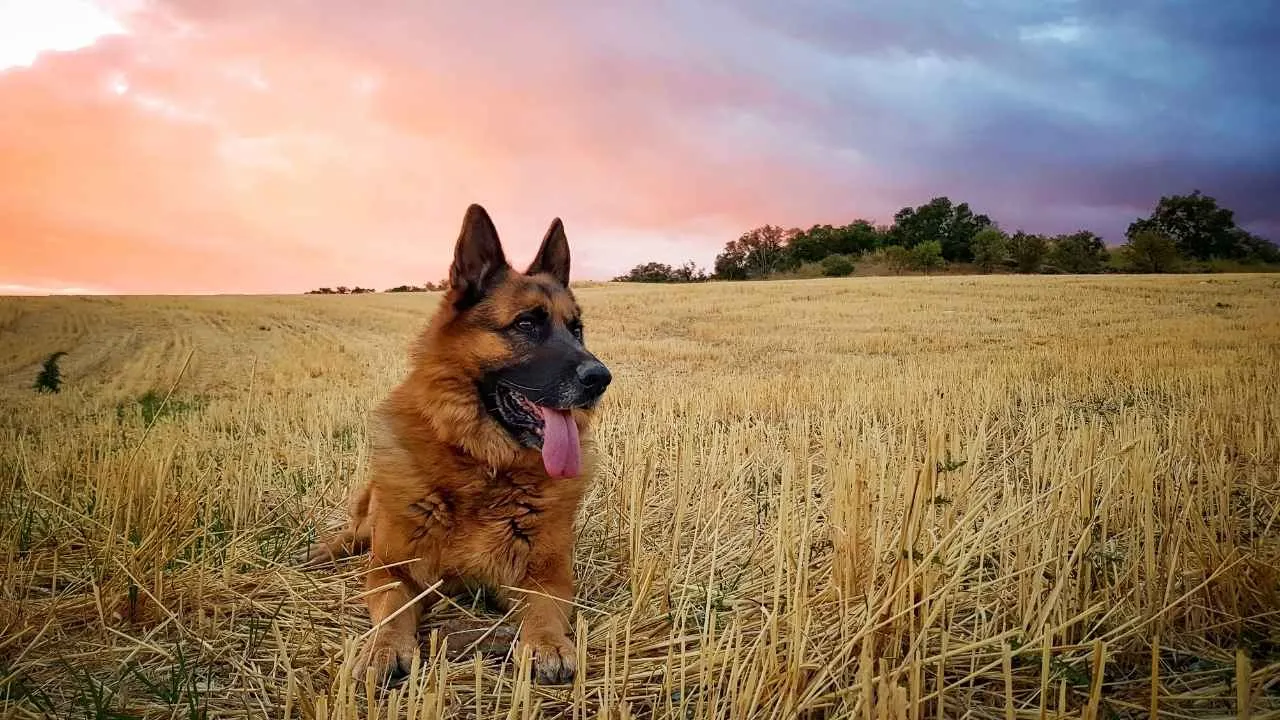
German Shepherds possess a natural awareness of boundaries—an instinct honed over decades of precise utility work. This sense of space makes them effective at identifying and reacting to movement near horses or property lines. They don’t just monitor—they evaluate, then respond decisively.
Herd Management Without Stress
Originally developed for livestock control, their herding instincts help them manage horse movement calmly. They circle without causing alarm, redirecting gently with presence rather than pressure. It’s a balance of quiet authority that allows horses to stay relaxed during transitions or disruptions.
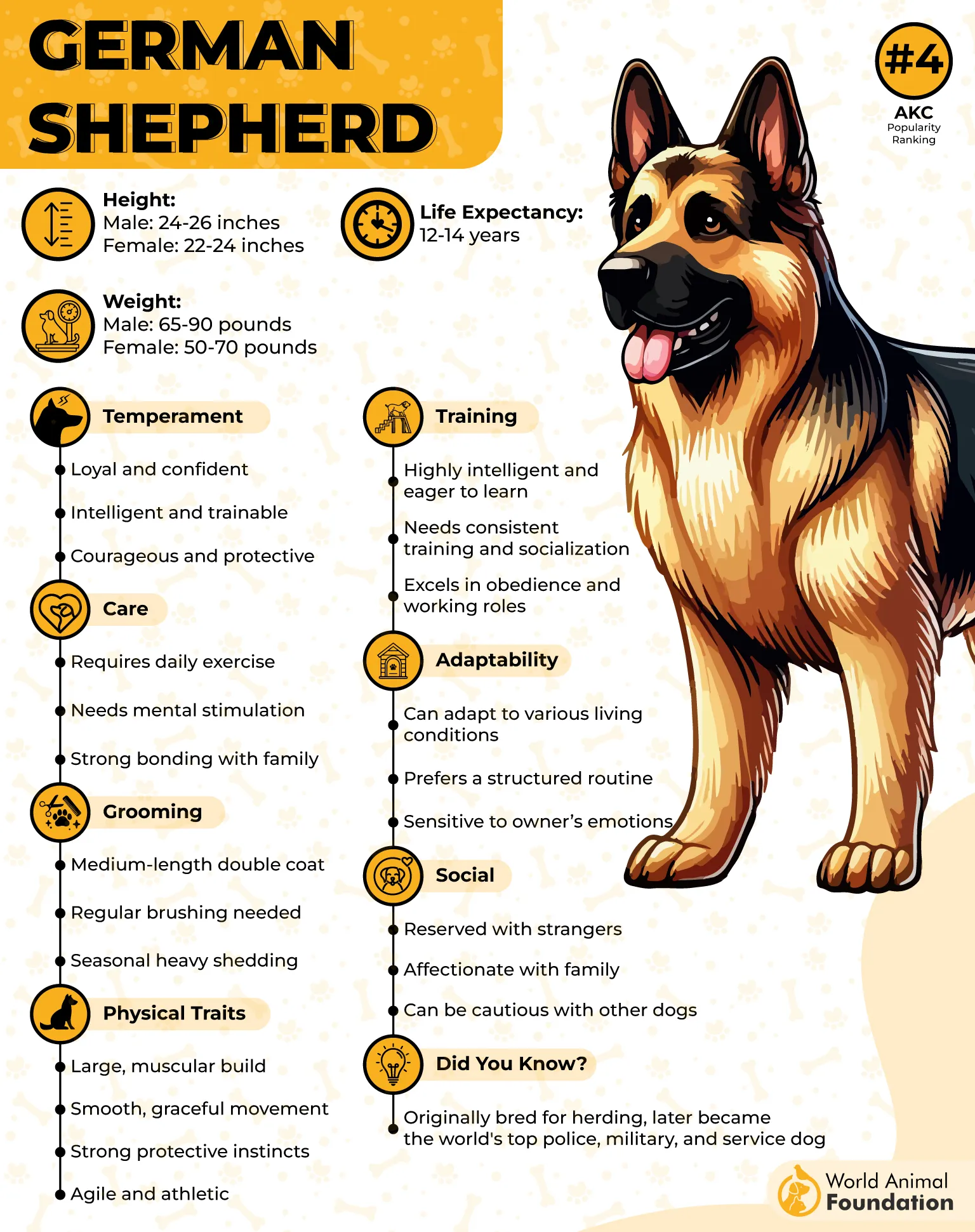
Confidence in Open Terrain
This breed adapts easily to large, open pastures where distractions are constant and visibility matters. They stay focused even when rabbits dart past or machinery hums nearby. That steadiness allows them to operate confidently in dynamic environments without losing alertness, as per Britannica.
Trusted Presence Around Livestock
Handlers often rely on their ability to interpret subtle cues from people and animals around them. A well-trained German Shepherd isn’t simply a guard dog; it becomes part of the daily rhythm, maintaining calm while staying prepared. Their reliability builds trust, both in the animals and the humans managing them.
2. Australian Cattle Dog
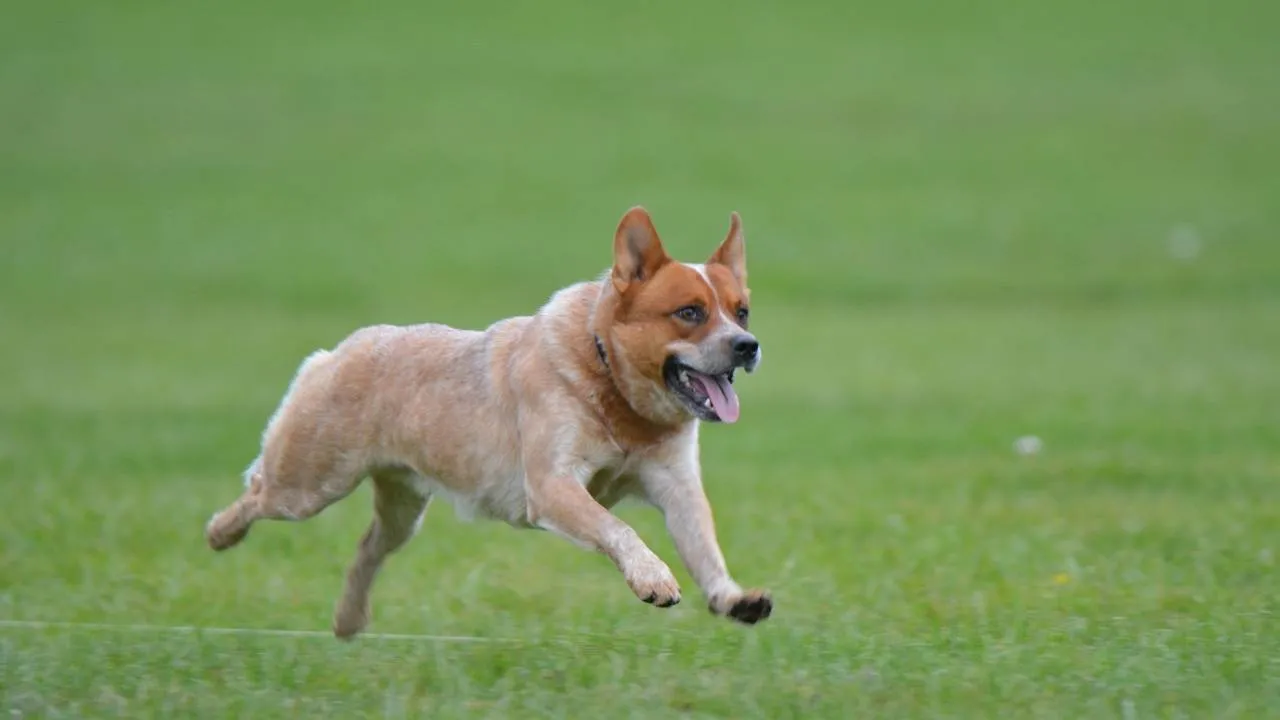
Australian Cattle Dogs have sharp visual tracking, tuned to subtle shifts in large animals. They’re often seen anticipating horse movements before a rider gives cues. This timing comes from their ability to study behavior and respond with seamless coordination.
Efficient Space Control
They’re naturally drawn to key control points like loading areas, gates, or shelter entrances. Instead of circling aimlessly, they hold ground with calculated movement. This makes them highly useful during transitions between open fields and confined areas.

Responsiveness to Shifts
Any unexpected shift—whether it’s a sudden whinny, hoof stomp, or external sound—gets a direct reaction. They move immediately without overstimulation, offering structure in moments that could spiral. Their reactions keep tension low when horses become uneasy.
Loyalty Rooted in Familiarity
After consistent exposure to a working environment, they start recognizing horses not just as livestock, but as part of a familiar routine. This is when protective instincts begin to develop. Whether it’s horses, handlers, or furry family members, their loyalty centers around who shares the workload.
3. Border Collie
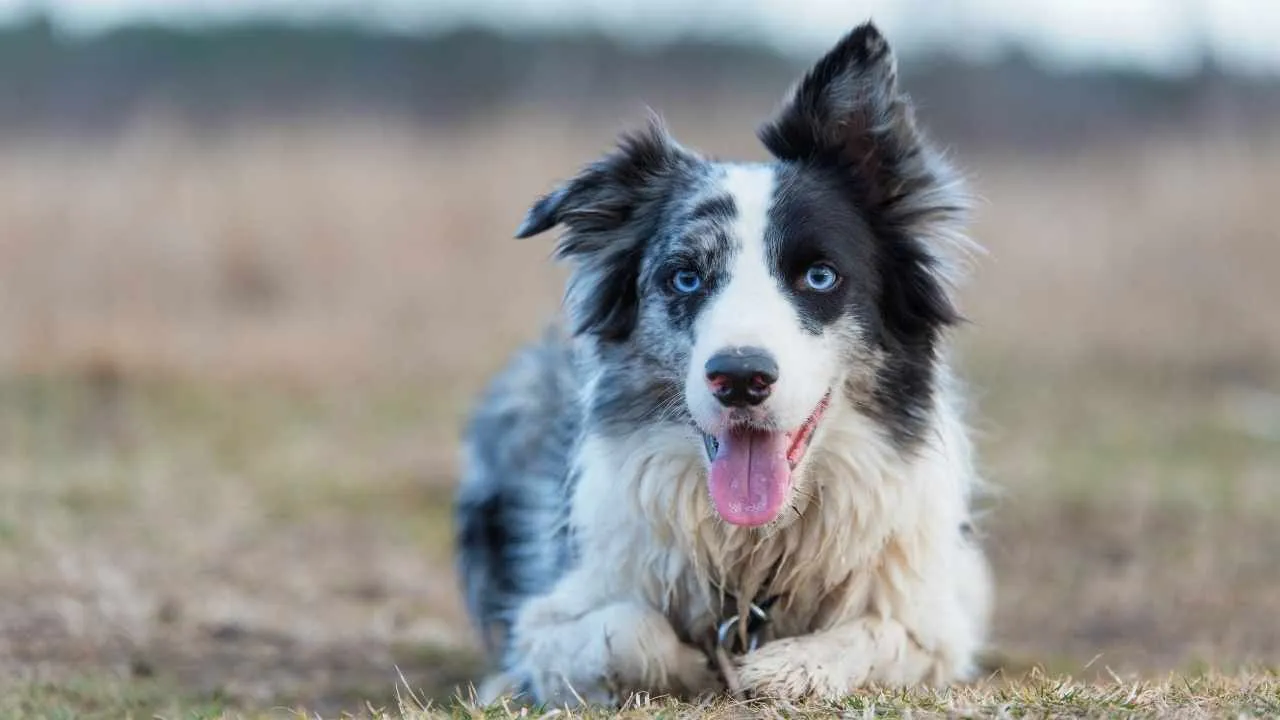
Border Collies naturally watch for gaps—physical or behavioral. If a horse edges toward fencing or hesitates during movement, they reacts by closing the distance or nudging direction with quiet intensity. This makes them valuable for maintaining physical order across wide open terrain.
High-Pressure Movement Management
They’re quick to respond in moments that call for immediate correction, as mentioned in Border Collies in Need. During unexpected changes—like a gate left open or a startled reaction—their ability to intercept and redirect keeps situations contained. It’s that precise targeting, not force, that keeps horses steady.
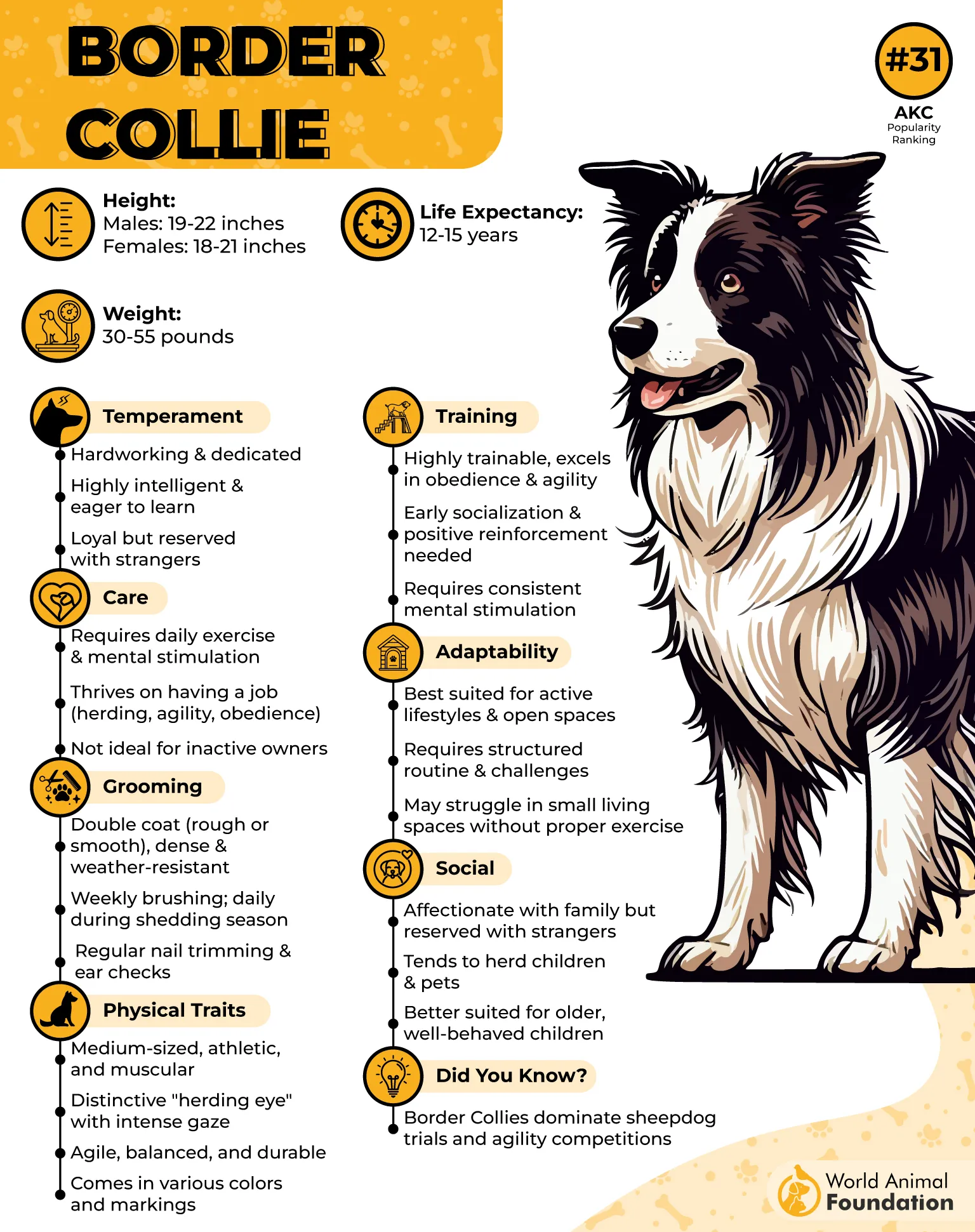
Mentally Linked to Motion
This breed tracks not just direction, but intention. Horses that slow, angle their ears, or shift their weight are cues they interpret instantly. That’s the working memory of herding dogs, and it allows them to stay one move ahead when managing motion around large animals.
Purpose in Daily Repetition
Because they were originally bred for managing livestock for hours without stopping, they’re not fazed by repetition. Their energy aligns well with handlers managing several other animals, especially in ranch environments where precision needs to be consistent across the day.
4. Australian Shepherd
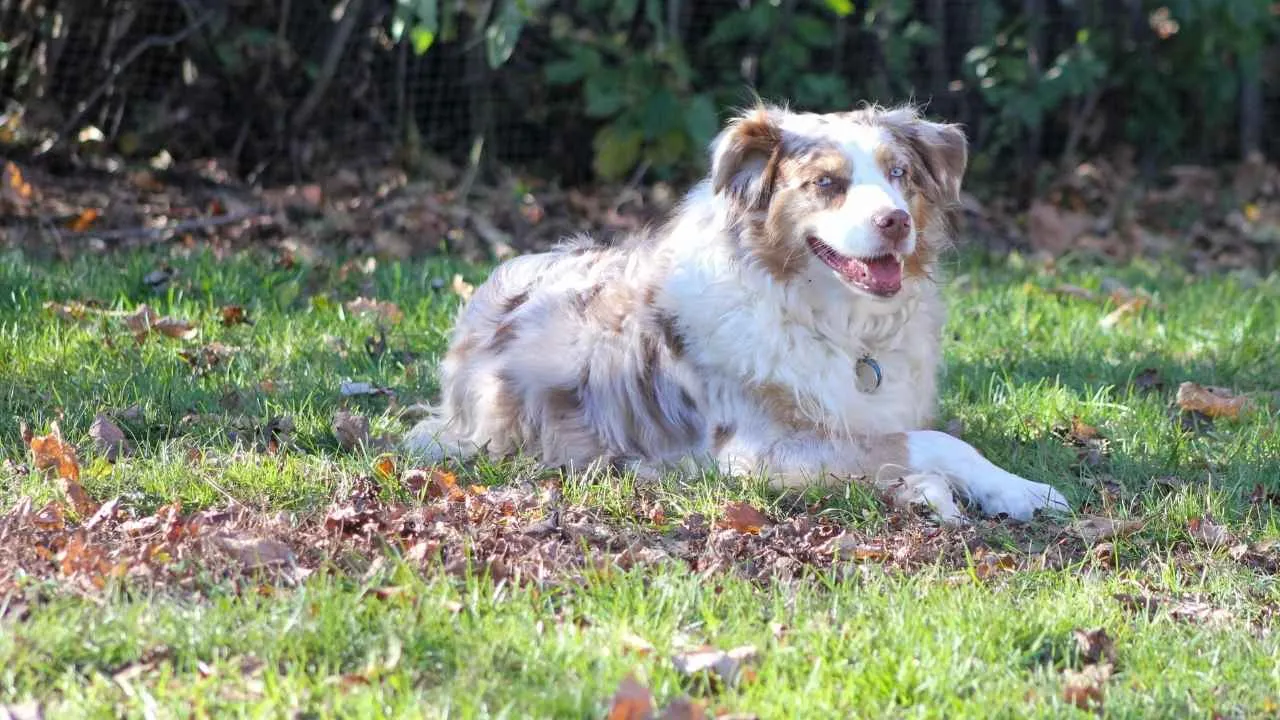
Australian Shepherds can detect the smallest shift—a flick of a tail, a hoof lift, a change in pace. Around horses, this sensitivity allows them to anticipate redirections without overstimulation. They move with a clear purpose, adapting instantly to group or individual changes.
Elevated Recall and Focus
Their responsiveness under instruction gives handlers real control, even across distance. A well-trained Aussie will halt mid-sprint, shift direction on a whistle, or re-approach calmly—all critical when horses are in motion. This consistent control helps avoid chaos in open fields.
Adjusts to Changing Herd Dynamics
They’re observant of subtle pecking orders and often change their strategy accordingly, stepping back when stallions assert, intervening when younger horses scatter. Compared to other breeds, Aussies remain more behaviorally tuned to shifts in temperament across the herd.
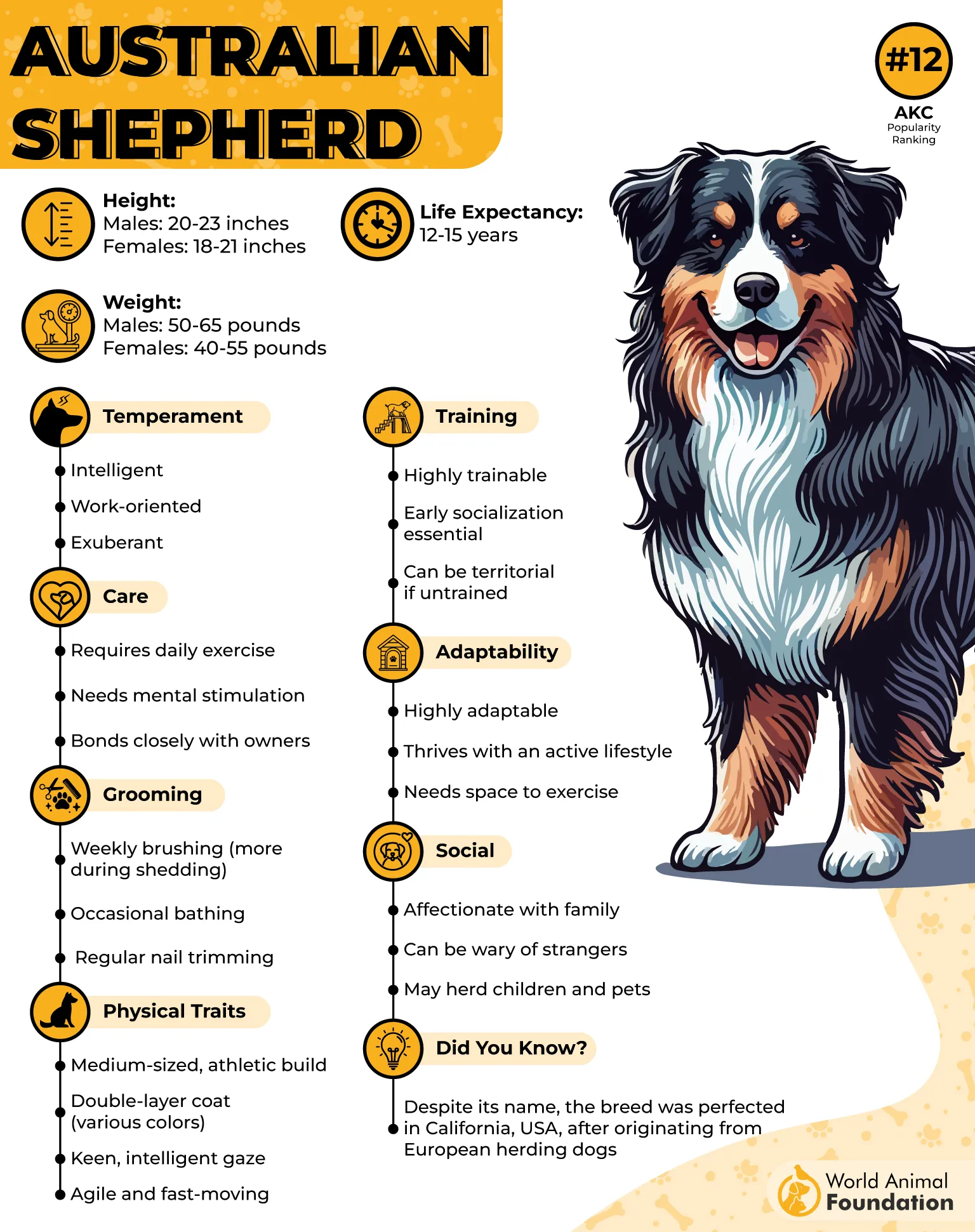
Driven by Cognitive Workload
As one of the most highly intelligent working dogs, their stamina is mental as much as physical, as WebMD claims. They’re not satisfied following patterns—they thrive when decisions involve complexity. With proper training, this need for stimulation translates into precise, proactive action around horses.
5. Golden Retriever
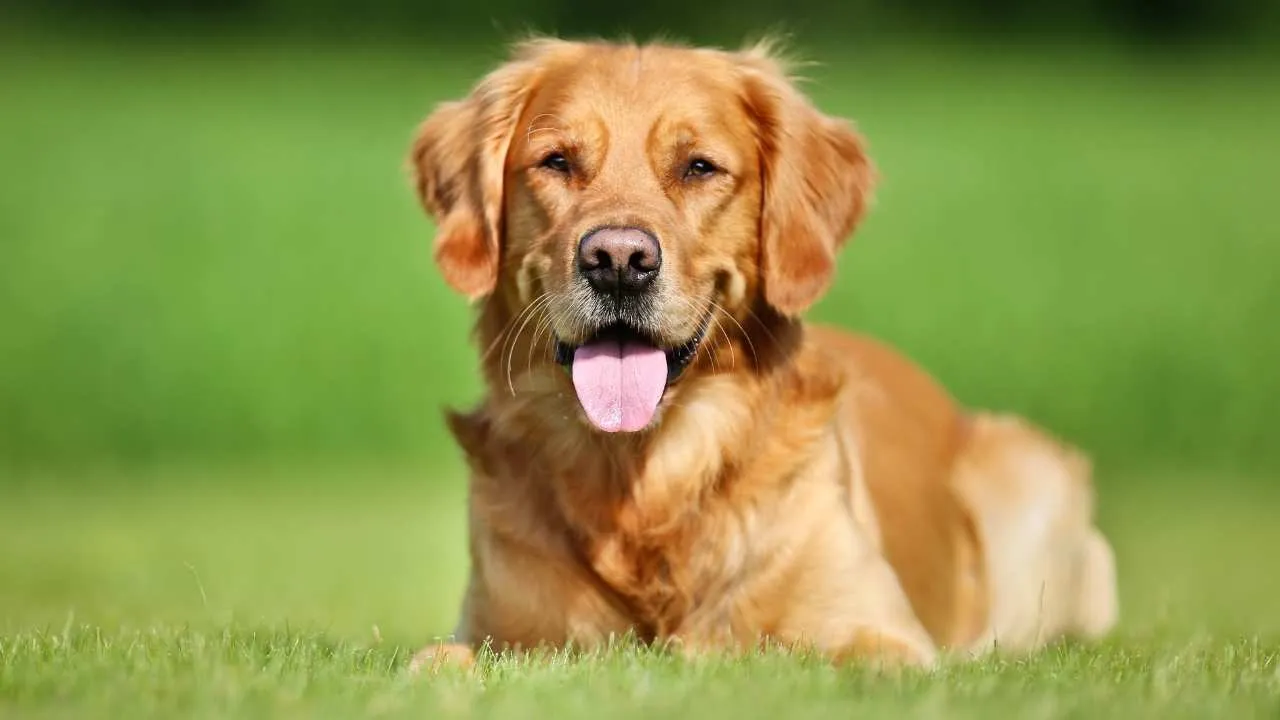
Golden Retrievers have a natural calming presence that helps balance excitable or nervous horses. Their body language stays relaxed even during loud noises or movement, making them ideal in barns with frequent human and animal activity. They work as a buffer, especially during grooming or vet visits.
Steady Companionship Over Time
This breed builds predictable patterns through repetition—staying nearby during feed times, pasture rotations, and training sessions. Horses become familiar with their rhythm, which reduces reactivity in shared environments. Over time, their quiet presence becomes part of the horse’s mental routine.
Controlled Reactions With Consistency
Instead of reacting with speed, Golden Retrievers respond with measured pacing. When unexpected situations arise, they don’t chase or bark instinctively. That kind of predictability is especially useful in spaces where other dogs might create unnecessary tension.
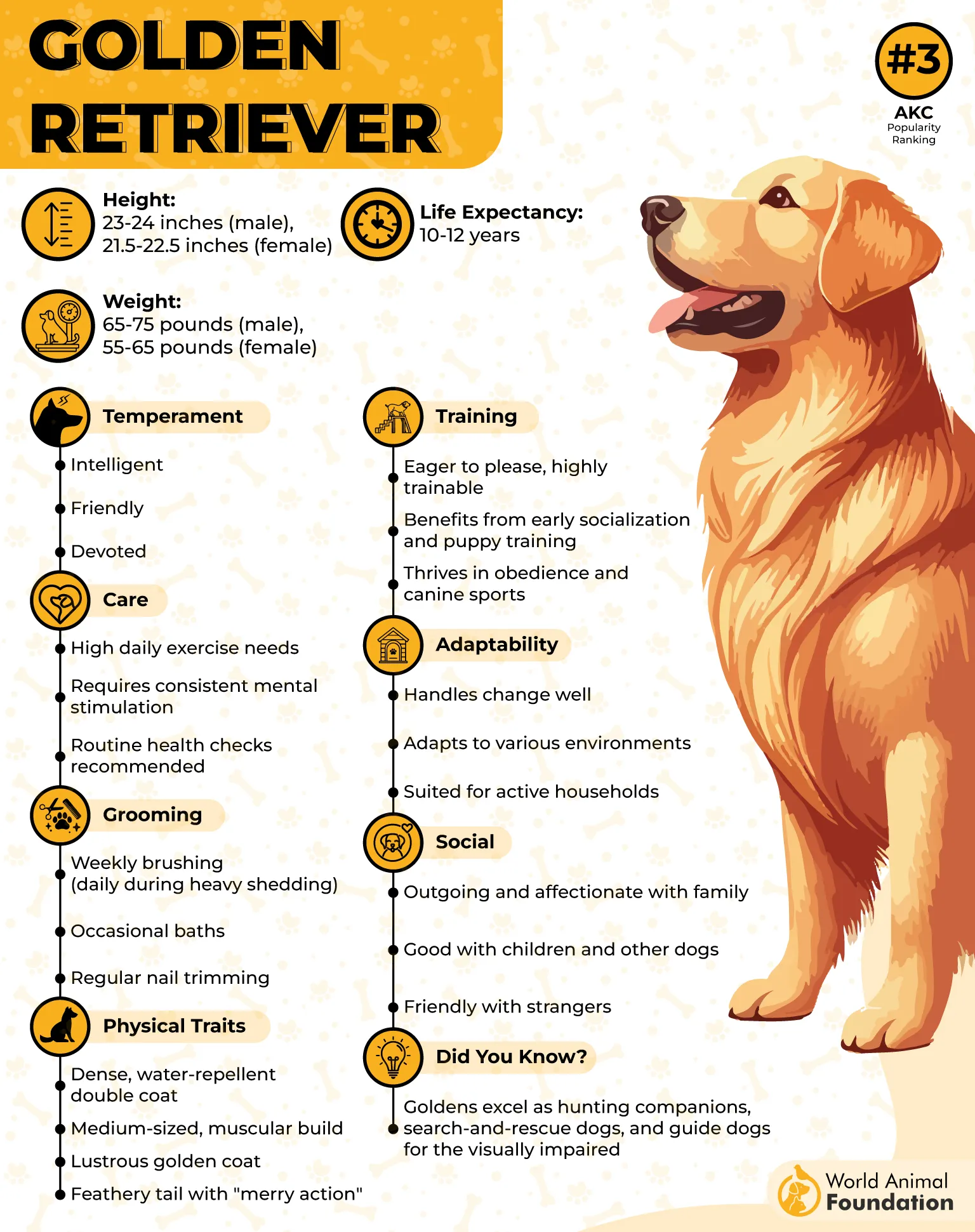
Soft but Watchful Demeanor
Despite their gentle nature, Golden Retrievers remain acutely aware of emotional shifts in animals and people. They don’t escalate unless they’ve sensed repeated discomfort or potential danger. That blend of sensitivity and protective nature gives them a unique role, not in force, but in steady emotional grounding.
6. Corgi
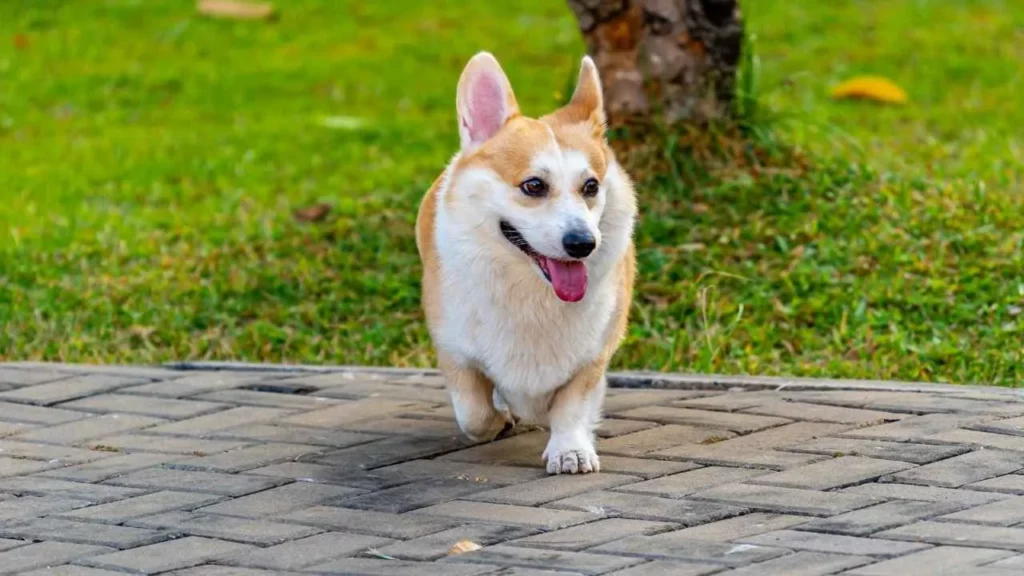
Corgis may be small, but their height offers a unique advantage: they track leg and hoof movement at close range. This lets them monitor gait changes in horses during movement or rest. Their eye level keeps them alert to anything that feels off at ground level.
Calculated Pressure With Speed
They use short, rapid bursts to direct or divert livestock without intimidating them. Horses respond well to their quick corrections because they’re unobtrusive and precise. Their instinct for flank control stems from centuries of fine-tuned droving behavior, not brute strength.
Strong Focus on Busy Barns
Corgis manage stimulation well in active stables where movement is constant. Bells, hay carts, or shifting weather don’t throw them off. Their steadiness allows them to work closely with handlers, often mirroring human posture and pace during routine tasks.
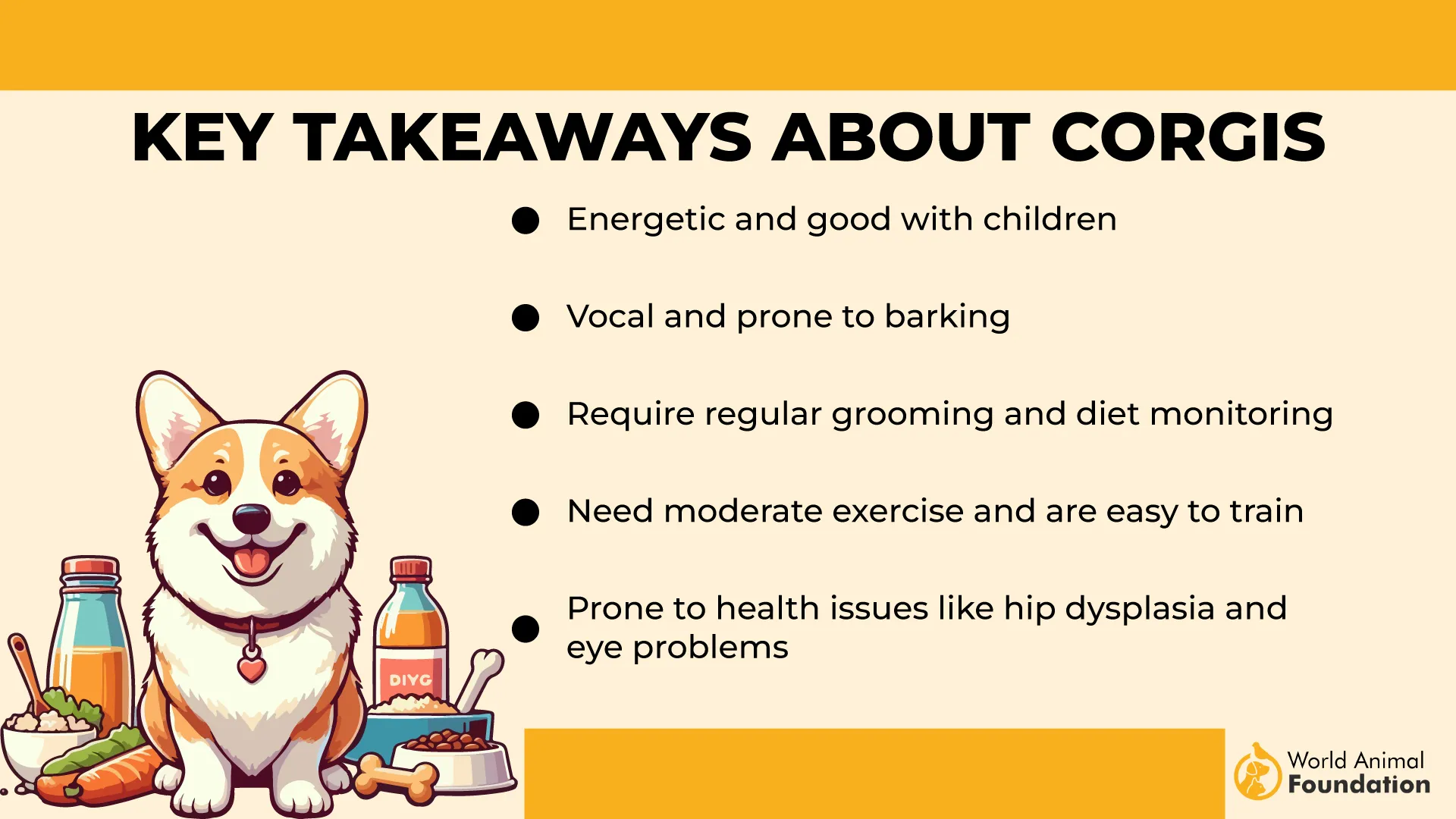
Practicality Over Size
They’re well-suited for properties with multiple animals and moving parts. Their role often expands naturally—watching foals, alerting to shifts in pasture behavior, or even trailing behind to help close the day. Despite their size, they’re also excellent companions for horses that need calm, repetitive exposure to smaller animals.
7. Great Pyrenees
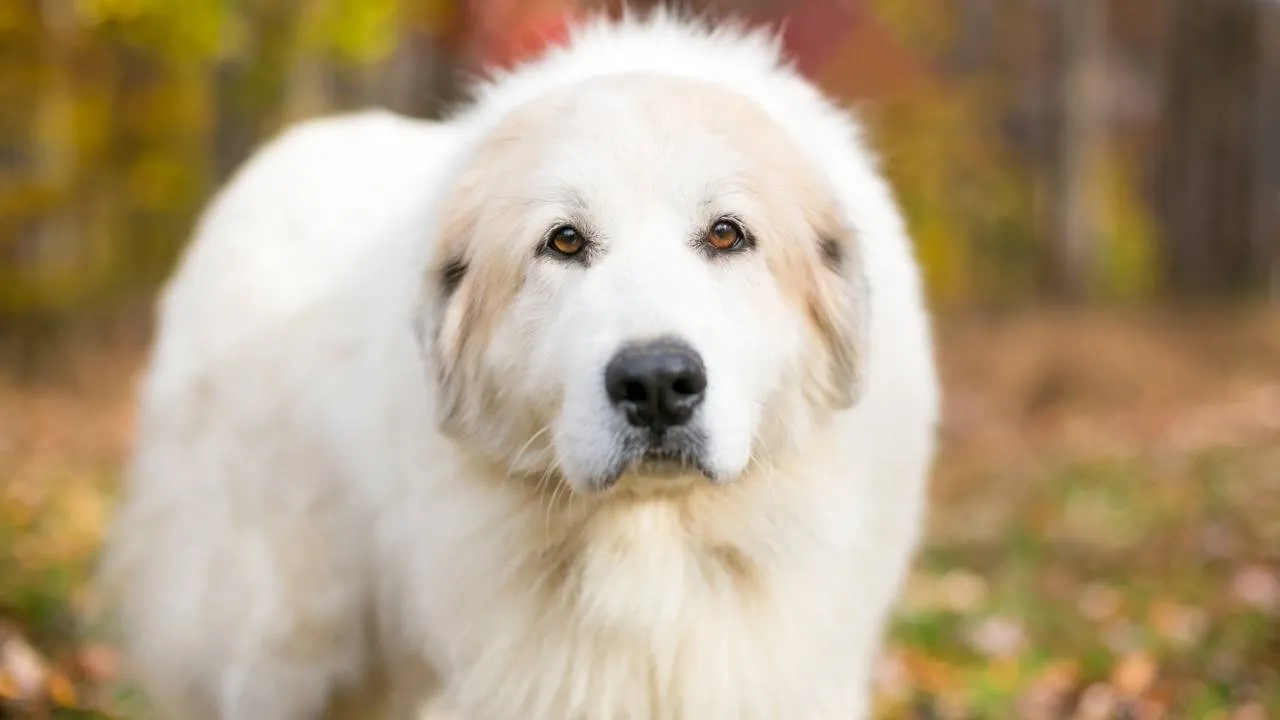
The Great Pyrenees is hardwired for overnight alertness. Originally bred to guard livestock from nocturnal predators, they maintain quiet patrols around stables or pasture fencing, as highlighted by the Great Pyrenees Club of Southern Ontario. Their instinct to monitor while others rest makes them valuable when visibility is low and horses are most vulnerable.
Silent Stand Against Intrusion
They rarely bark without cause. Instead, they remain still and observant, often placing themselves between horses and perceived threats. That silent watchfulness helps maintain calm across the herd, reducing the risk of agitation or unpredictable movement in confined night shelters.
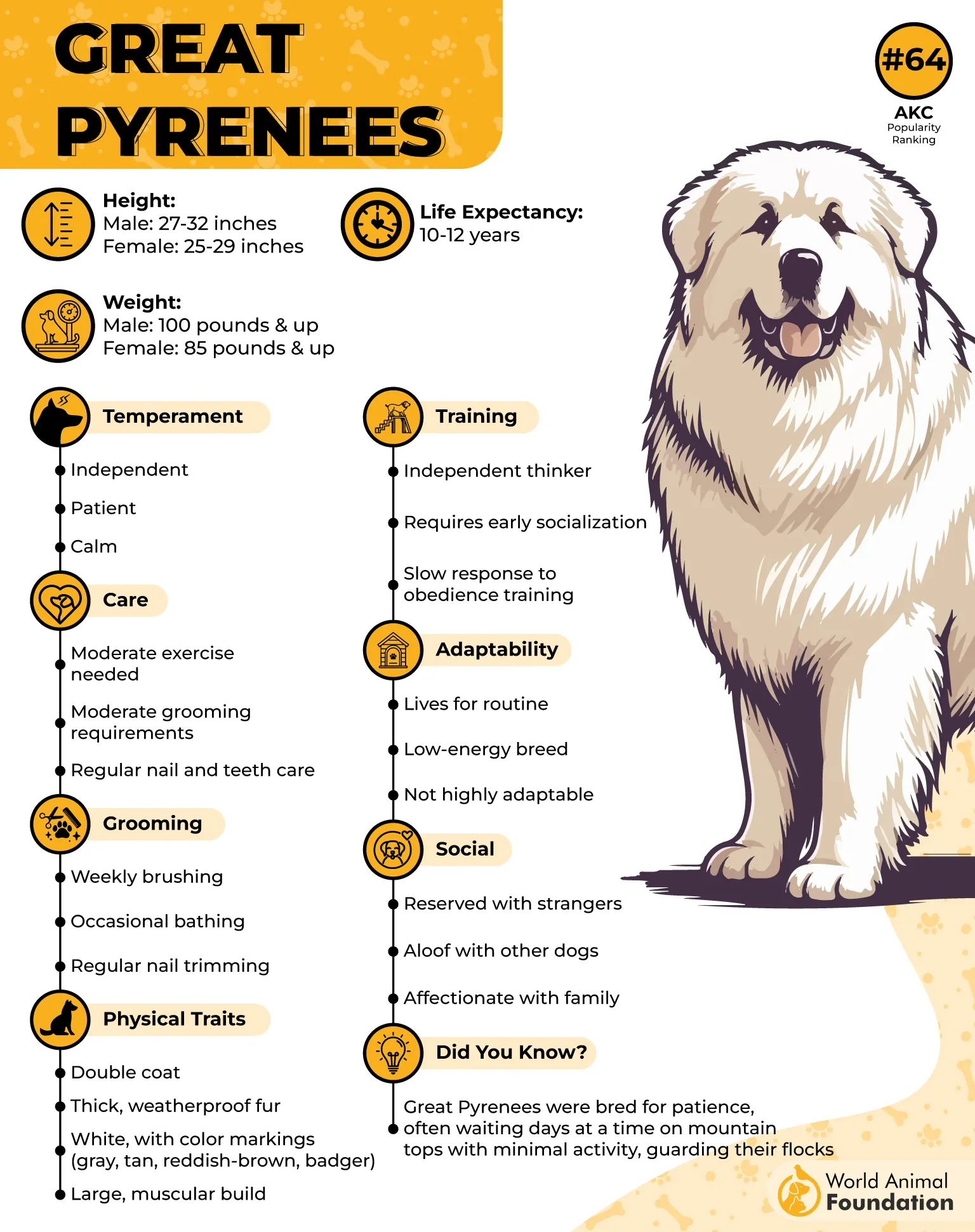
Low-Reactivity Temperament
Despite their size, they operate with a calm, grounded presence. Horses respond well to their steady posture and slow movement. This trait becomes especially useful on a farm where scattered distractions and unexpected encounters happen daily.
Long-Term Emotional Mapping
These dogs form mental maps of routine and territory early, even as a puppy. Their ability to retain familiarity with areas, animals, and individual owners results in deep-rooted loyalty. The bond they form is based not on energy or play, but constant environmental awareness and unspoken presence.
8. Rottweiler
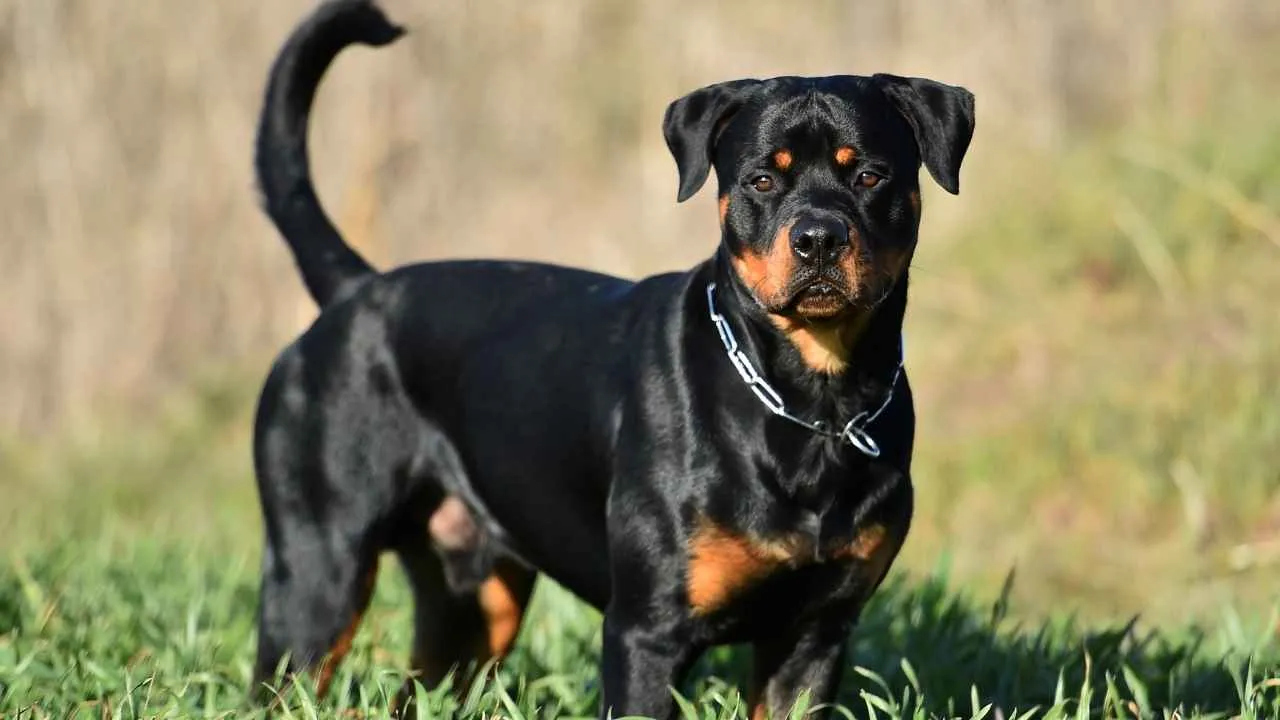
Rottweilers don’t rush toward activity—they assess. If a horse reacts to a distant sound or sudden motion, the Rottweiler holds still, gauges the intent, and only then intervenes. This deliberate approach helps prevent escalation in barns or near high-strung animals.
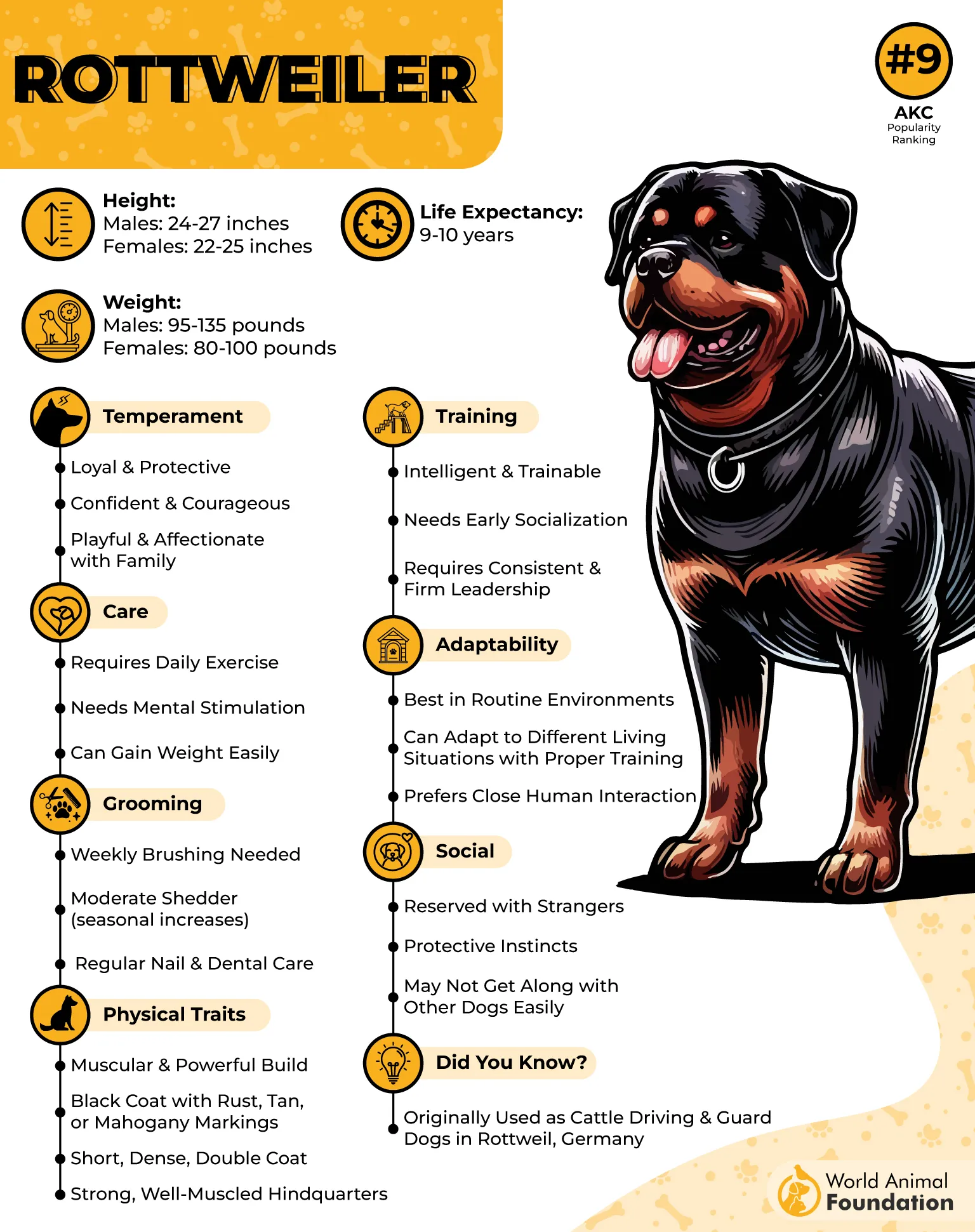
Physical Presence With Mental Boundaries
Their sheer presence influences how horses move through space. Without touching or barking, they control direction by where they stand. Experienced handlers use this trait to steer horses around trailers or through gates, simply by letting the dog stand its ground.
Strong Memory for Routines
Rottweilers are known to recognize daily patterns in barn management. They anticipate when horses are led out, where they pause, or how long a feed cycle takes. That memory helps them position themselves where they’re most needed—before they’re even asked.
Assertiveness Without Herding
Unlike instinctive herders, Rottweilers apply assertiveness rather than circling or flanking. They don’t try to move the horse—they control the environment so the horse moves itself. This makes them ideal for stationary roles like securing barn perimeters or flanking stall entrances during busy hours.
9. Bernese Mountain Dog
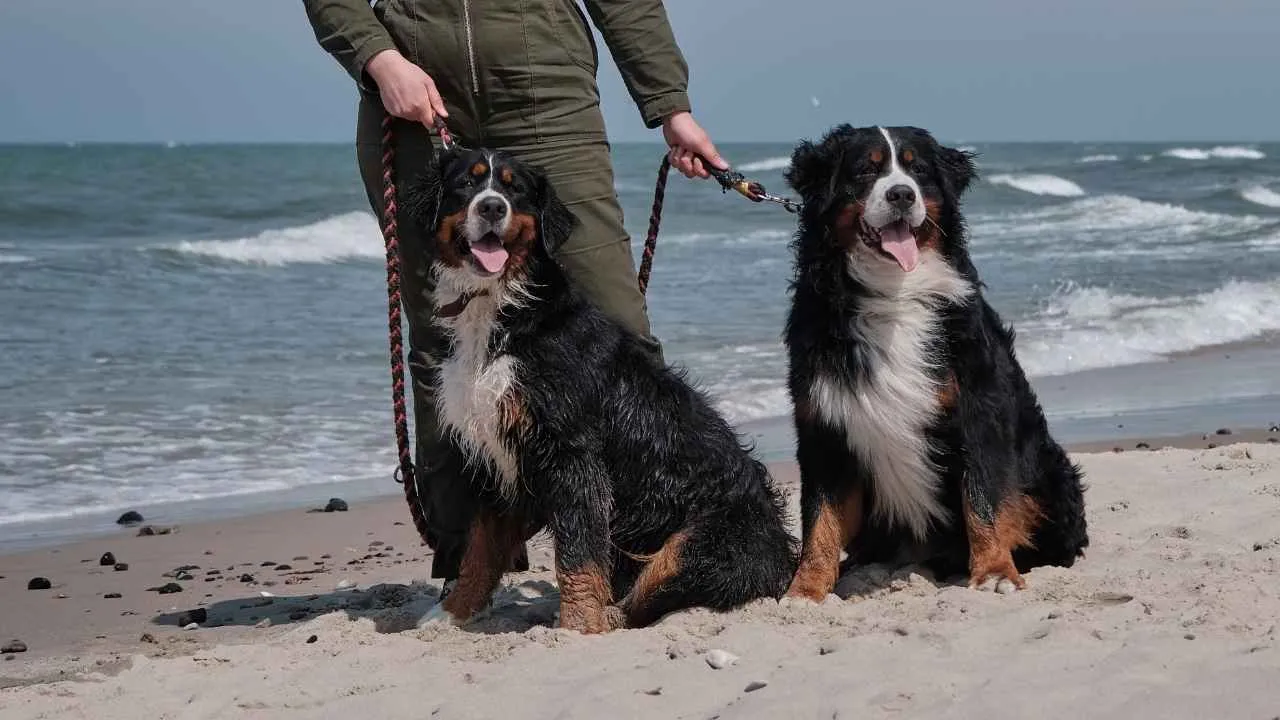
Bernese Mountain Dogs maintain composure even when larger animals shift suddenly or unpredictably. That stability becomes an anchor in barns or open pastures where loud noises or fast movement can trigger horse anxiety. Their calm presence helps reduce chain reactions.
Cold Climate Compatibility
They function especially well in colder regions where other breeds may lose stamina. Snow-covered terrain doesn’t reduce their mobility or energy, making them a steady presence around horses during winter turnout or early morning barn work.
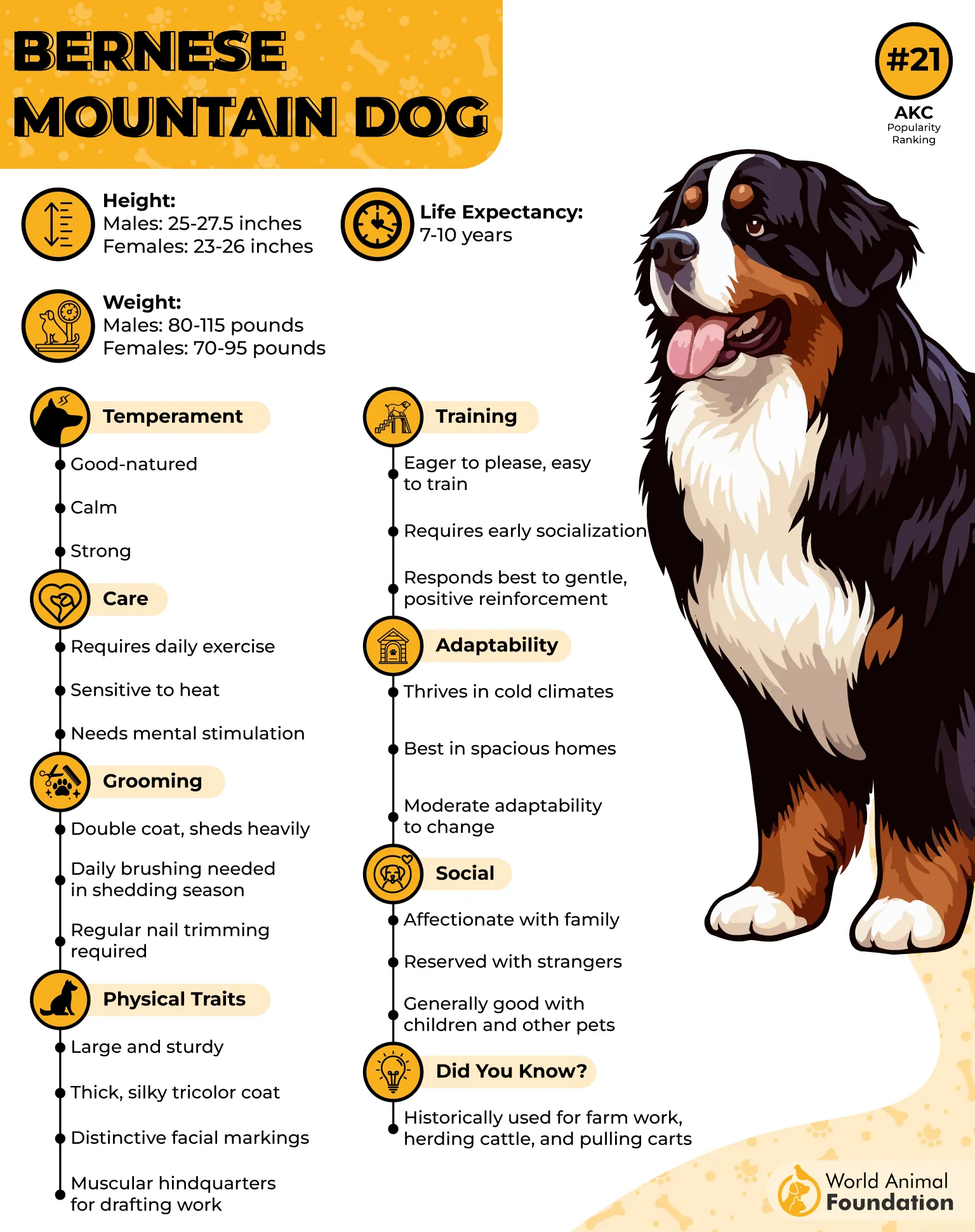
Low-Reactivity Perimeter Watching
This breed doesn’t bark at every sound—it filters stimuli. When monitoring rural properties or stable perimeters, it focuses on unfamiliar movement, not routine activity. That selective attention makes them suitable for horse owners who value silence around sensitive animals.
Deep Connection With Handlers
They often stay close to their primary human, observing daily routines until they begin anticipating tasks without verbal direction. This quiet shadowing creates an intuitive connection that helps them adjust their movement near horses without startling them or interfering.
Conclusion
The field always quiets in the late hours. Horses graze more slowly. Light fades behind the hills. And somewhere near the edge of the fence line, a shape moves. Not hurried. Not loud. Just there—walking, watching, knowing the land by heart.
That’s the presence these dogs bring. Not noise, not panic—awareness. They don’t run to the barn because you call. They’re already there because they know it’s time. This kind of work doesn’t come from a leash or a treat. It comes from instinct, built across generations.
These aren’t dogs bred to impress—they’re bred to guard. Their loyalty isn’t shown in tail wags or tricks, but in the calm you carry when they’re nearby. That’s what matters in the end.
Not how fast the dog runs. Not how loud it barks. But whether your horse closes its eyes to rest, knowing someone else is standing watch. That’s a job only the right dog understands.


